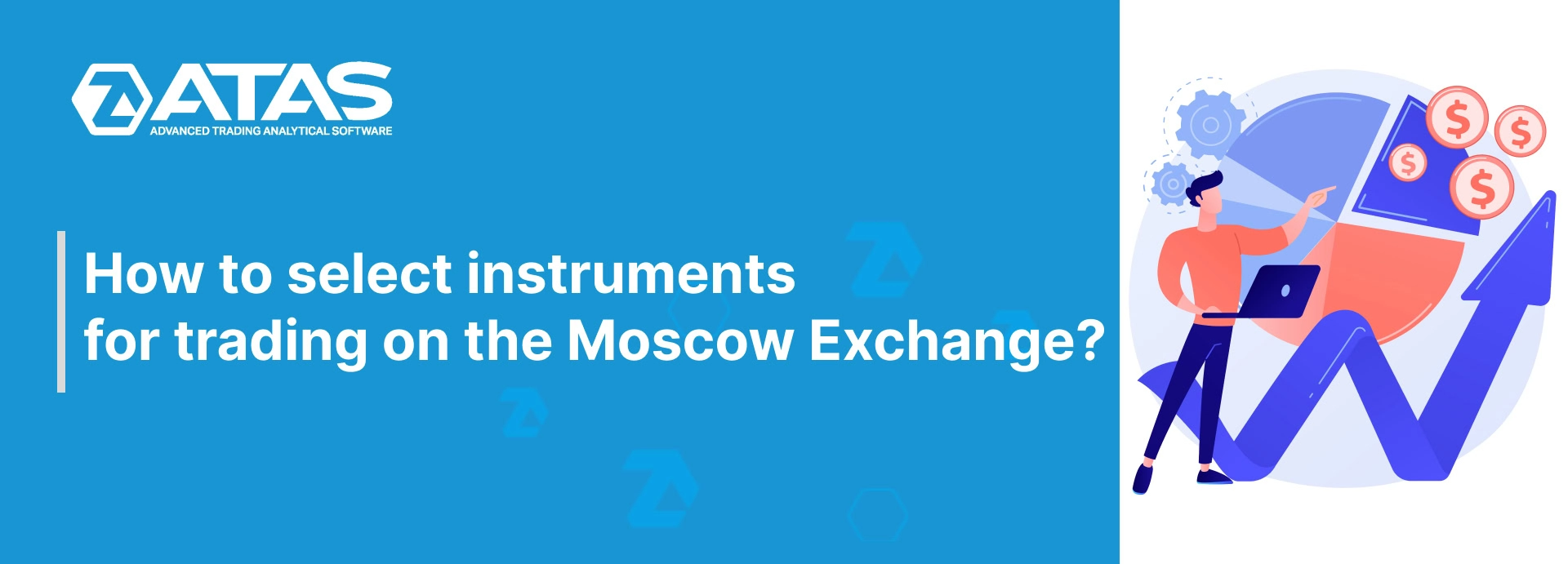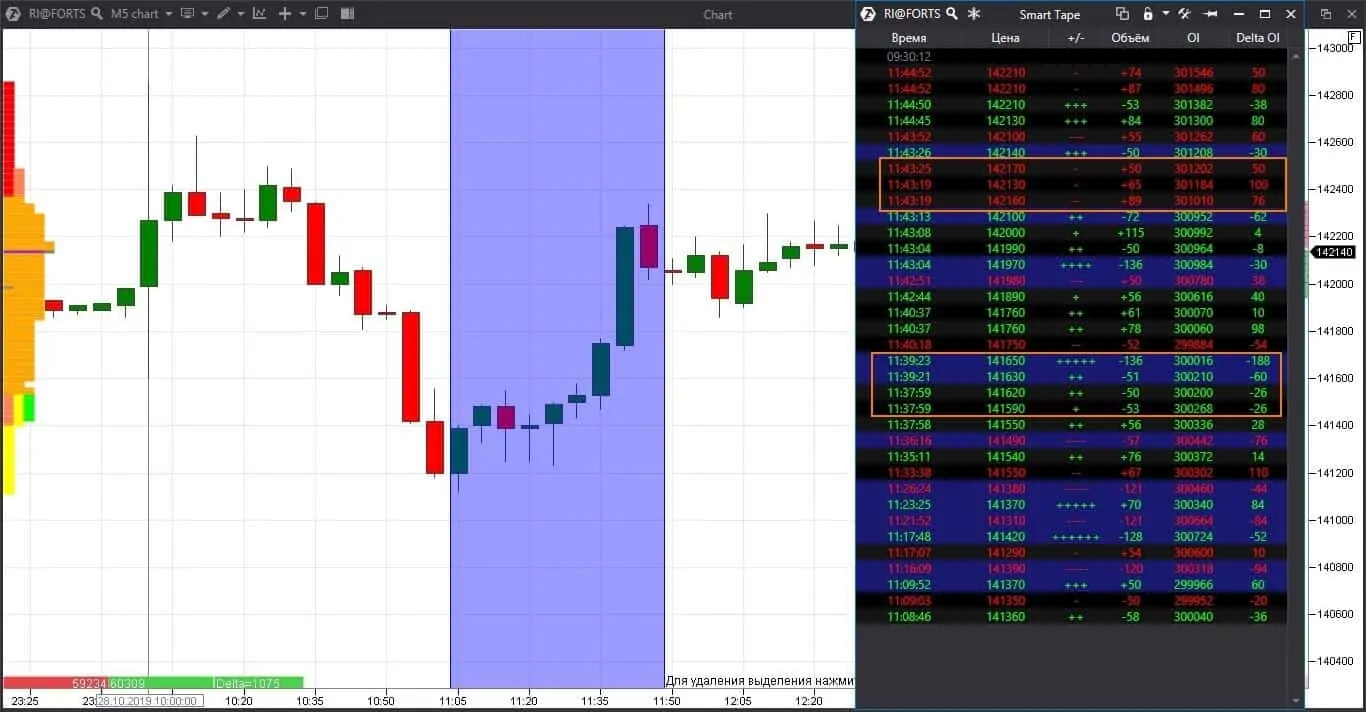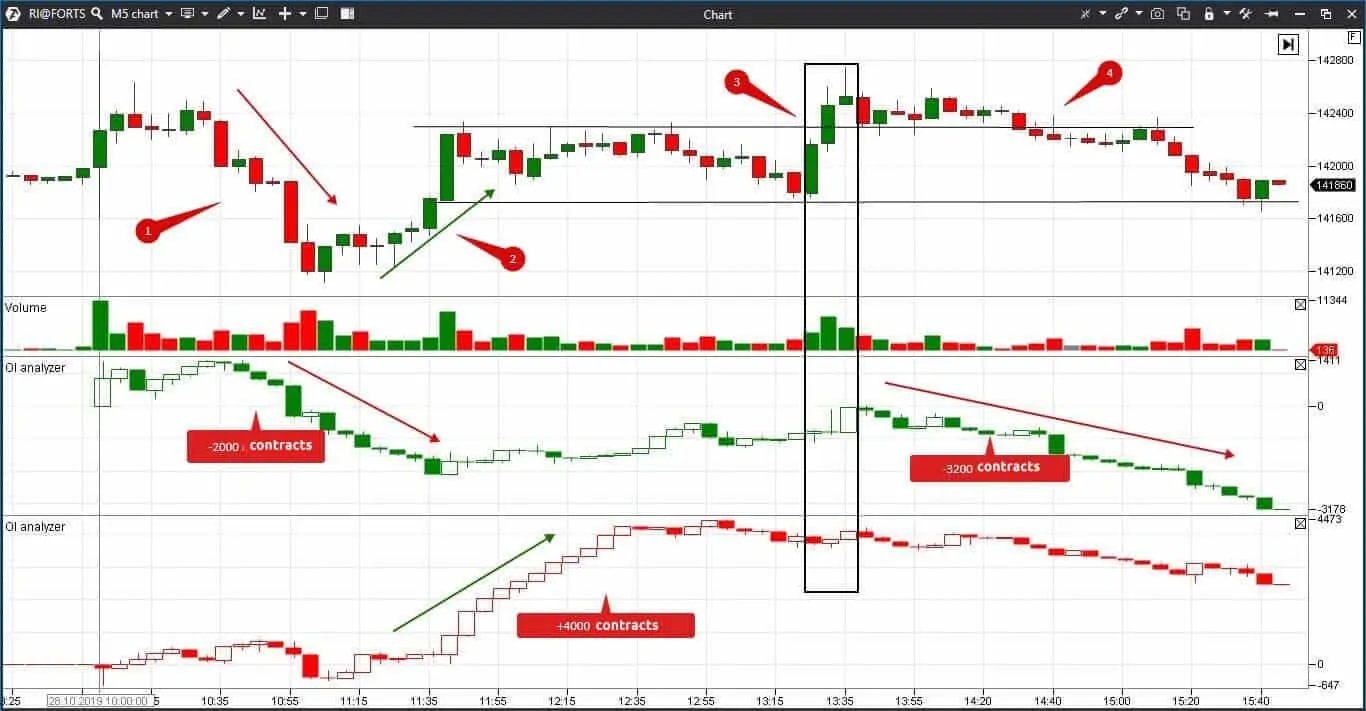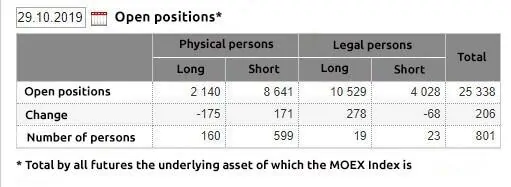Selecting tools to trade on the Moscow Exchange
The issue of a start-up capital arises immediately after traders start thinking about what instruments to trade and in what markets. Foreign brokers recommend to open an account when you can spare USD 10-25 thousand. Not everyone has this type of money. Those people who just start their trading career and want to try themselves in the big fight for money but do not have a big start-up capital can use the Moscow Exchange (MOEX).
In this article we will tell you:
- How to open a brokerage account on the Moscow Exchange.
- What sections are available on the Moscow Exchange.
- What instruments you can trade in the forward market.
- Tricks of the Moscow Exchange and ATAS.
- Advantages and disadvantages of the Moscow Exchange forward market.
How to open an account on the Moscow Exchange
Private persons can trade on the Moscow Exchange through brokers. You can find a list of all brokers on the official web-site of the Exchange. We already wrote a detailed article about how to open a brokerage account on the Moscow Exchange, that is why we will not discuss technical details here.
Some Russian brokers want you to have at least RUB 30-50 thousand. Other Russian brokers have flexible requirements if there is a certain amount or securities on the brokerage account. That is why, please, study brokerage commissions and terms and conditions very attentively, especially the ones written in small print. Even if you miss something, you can always open an account with another broker and/or trade on several accounts.
We recommend beginner traders to consider the demo account service. It allows to trade using a ‘rough draft’ and gain experience without putting the account at risk.
What sections are available on the Moscow Exchange?
- Stock Market is the place where traders buy and sell stocks, shares and bonds. There are many long-term investors in this section. Brokers take commissions for turnover, however, as a rule, not less than a certain amount (for example, RUB 35 a day). Records about securities are stored in the depositary, for the services of which you also have to pay.
- Currency Market is the place where they trade currencies. 1 lot is 1,000 currency units, for example, USD 1,000. You cannot split the lots. Brokers can take an additional commission if you trade a small number of lots. Big money is circulated here. You can use high credit leverages, however, you also need to have skills, experience and capital.
- Forward Market is the place where they trade futures and options contracts. A broker takes a commission for each contract independent of its size. The exchange takes different commissions for each contract depending on the contract type and size. You can find a detailed description (specification) of contracts on the web-site of the Exchange. For example, an RTS index futures contract (cash settlement contract) – the price step was RUB 12.74 as of October 25 and the guarantee collateral was RUB 22,301.
Forward Market of the Moscow Exchange
Forward Market (MOEX forward market forts) is the most interesting section for intraday trading. Please, read our article if you do not know what futures contracts are.
If you consider futures contracts from the speculative and unscientific point of view, they are the very same underlying assets but for the smaller money and smaller commission. For example, one Sberbank stock futures is 100 Sberbank shares. However, in order to buy a futures a trader needs a guarantee margin of about RUB 4,300 and not the whole cost of 100 shares. Thus, when a trader buys a futures contract, one Sberbank share costs RUB 43 for a trader and not RUB 239 (the prices are taken at the moment of writing this article).
A trader makes profit or loss from the whole cost of a futures contract and not from the cost of the guarantee margin. It is a very simple explanation of how the credit leverage works when you trade futures.
If the Sberbank stock becomes more expensive, the whole cost of the futures contract will also increase. If a trader takes the right side, he will make a good profit. However, if a trader takes the wrong side, the losses can kill his deposit.
Instruments of the Forward Market of the Moscow Exchange
The Moscow Exchange forward market allows to trade futures and options contracts on indices, stocks, currencies, Federal Loan Bonds and interest rates. The most liquid instruments are:
- RTS index futures. RTS index is a composite index weighted by market capitalization (what the stock index is) of the 50 most liquid stocks of the Russian market, calculated in USD. In other words, the RUB to USD exchange rate also influences the index as well as the stock prices. Guarantee collateral for one contract was RUB 21,882 as of the end of October and the price step was RUB 10. The Exchange took RUB 3.95 for registration of a trade.
- USD/RUB exchange rate futures. The guarantee collateral for one contract was RUB 4,242 as of the end of October and the price step was RUB 1 only. The Exchange took RUB 0.99 for registration of a trade.
Futures contracts differ from each other with:
- liquidity;
- underlying asset;
- guarantee collateral. The minimum guarantee collateral on the Moscow Exchange was less than RUB 1,000 for futures contracts on some stocks as of the end of October;
- commission. A broker, as a rule, takes a flat commission for each contract. The Exchange commission depends on the contract type and cost;
- price step. The minimum price step is RUB 1. The maximum price step is RUB 25.
Pay attention to whether your broker provides you with a possibility to trade all the forward market instruments. For example, some brokers will not provide you with a possibility to trade WTI oil futures contracts.
Do the prices on the Moscow Exchange differ from the prices on other exchanges?
As a rule, they do not differ. It was different many years ago. You might have noticed the silver price growth in New York, make an immediate call to Chicago and post an order to buy silver. And you would have received profit. Modern globalization has minimized the price difference on different exchanges, especially this is true for popular markets.
For example, the gold futures price changes practically synchronously all over the world. The difference could be only in the trading volumes.
Tricks of the Moscow Exchange and ATAS
The Moscow Exchange shows the Open Interest (OI) in real time. It is a great advantage for traders since they can see exactly what the sellers and buyers do – close their contracts or open new ones.
We will show the Open Interest delta, which is seen in Smart Tape, in our first example. This indicator is not available in the tape by default, so you will need to add it manually in the settings.
- The Open Interest positive delta means new contracts.
- The Open Interest negative delta means closing old contracts.
Here we have a 5-minute RTS index futures chart and Smart Tape with filtered out trades for the selected period. We selected trades of 50 and more contracts in order not to overload the tape.
We marked new short positions with the upper yellow rectangle. The volume increases and the OI delta grows. We can see closure of old short contracts in the lower yellow rectangle because the volume decreases and the OI delta reduces.
New positions mean new money and traders’ interest – it is a ‘fuel’ for the price movement. Closure of old positions could mean the profit registration or exit by stops. New major orders do not emerge for no reason since the managed money doesn’t like losses and know much more than amateurs. The Moscow Exchange gives a clue to traders what the managed money does, while ATAS made it a convenient instrument.
An example of trading on the Moscow Exchange
Our second example is also connected with the Open Interest. We will use the OI Analyzer indicator which separates actions of buyers and sellers from each other. Here we have a 5-minute RTS index chart. We added the OI Analyzer buy for long positions, OI Analyzer sell for short positions and Volume indicators.
- The price decreases during the period 1 and it happens not because of opening new short positions but because of closure of old long positions. There is no sellers’ activity here. The price will, most probably, bounce after traders finish to close their long positions.
- The price bounced during the period 2 but, at the same time, sellers became active and opened 4,000 new contracts. On the one hand, it’s not too many. On the other hand, such an activity during the boring lunch hours should attract attention. Later, the price consolidated – we marked the consolidation range with black horizontal lines.
- Buyers tried to break the upper boundary on the increased volume and new orders in point 3. However, it’s interesting that sellers continued to hold their contracts despite the losses. The breakout was false and the price started to decrease.
- Closure of long positions during the period 4 added ‘fuel’ to the downtrend, since there are no new sells here again. This is the type of analysis you can conduct if you use the Open Interest.
The Moscow Exchange shows the general data about the Open Interest with a breakdown into physical and legal persons at the end of each trading session.
It’s interesting that positions of physical persons often ‘stand against’ positions of legal persons. It is useful to remember about actions of the managed money in such cases.
Example: a MOEX Index futures chart.
- To the left: a day chart with the Volume and Delta indicators.
- To the right: a chart of long positions of legal persons (green line), short positions of legal persons (red line) and the futures closure price (blue line).
- We marked the contract change with point 1. The number of open positions sharply fell.
- We marked October 15 with point 2 and with red rectangle in the left chart. The futures price started to grow up to a new historical high during that session. The number of long positions of legal persons grows together with the price, while the number of short positions falls. The legal persons worked with the managed money in our example. Physical persons took the opposite loss-making position.
Trading is a two-sided process – someone has to lose. However, it would be better if this someone is not you.
If you decided, having read the previous paragraph, that you found the Grail and a heavy flow of money will rush into your deposit, we should warn you. You cannot make firm conclusions about a potential price growth judging by the growth of long positions of legal persons!
Legal persons can be both speculators and hedgers.
- If a hedger has USD 1,000 and the USD exchange rate grows, he will sell a USD exchange rate futures contract since his task is to protect USD 1,000 from a sharp growth or fall.
- If a speculator has USD 1,000 and the USD exchange rate grows, he will buy a USD exchange rate futures in order to increase his profit.
Both a hedger and speculator could be legal persons with big money.
Advantages and disadvantages of the Moscow Exchange Forward Market
| Advantages | Disadvantages |
| Small guarantee collateral compared to CME. | A small number of liquid instruments. However, if you want to focus on 1-3 markets, it is not a disadvantage any more. |
| Small tick cost compared to CME. | A number of instruments follow the world price quotes but with a much lower liquidity – oil and currencies. Again, if you are a beginner trader with the working position of 1-5 contracts, you have a sufficient liquidity. |
| Major orders are clearly seen. | |
| Open Interest works in real time. | |
| Liquid and volatile instruments, for example, an RTS index futures or USD/RUB exchange rate futures are rather ‘active’. There is a possibility to make money. | |
| There are many brokers with minimum requirements to a start-up capital. | |
| You can have an additional trading session in the forward market during operation of the US exchanges. |
Conclusions
The Moscow Exchange is good to start with. You can select instruments with a small guarantee collateral. Of course, you will hardly make millions trading such instruments, but the risks are limited.
At the same time, if you successfully trade expensive futures, you can make good money every day. Try ATAS. It allows to conduct a high-quality analysis of the Moscow Exchange forward market. Use advantages of trading on the Moscow Exchange with ATAS.








